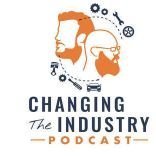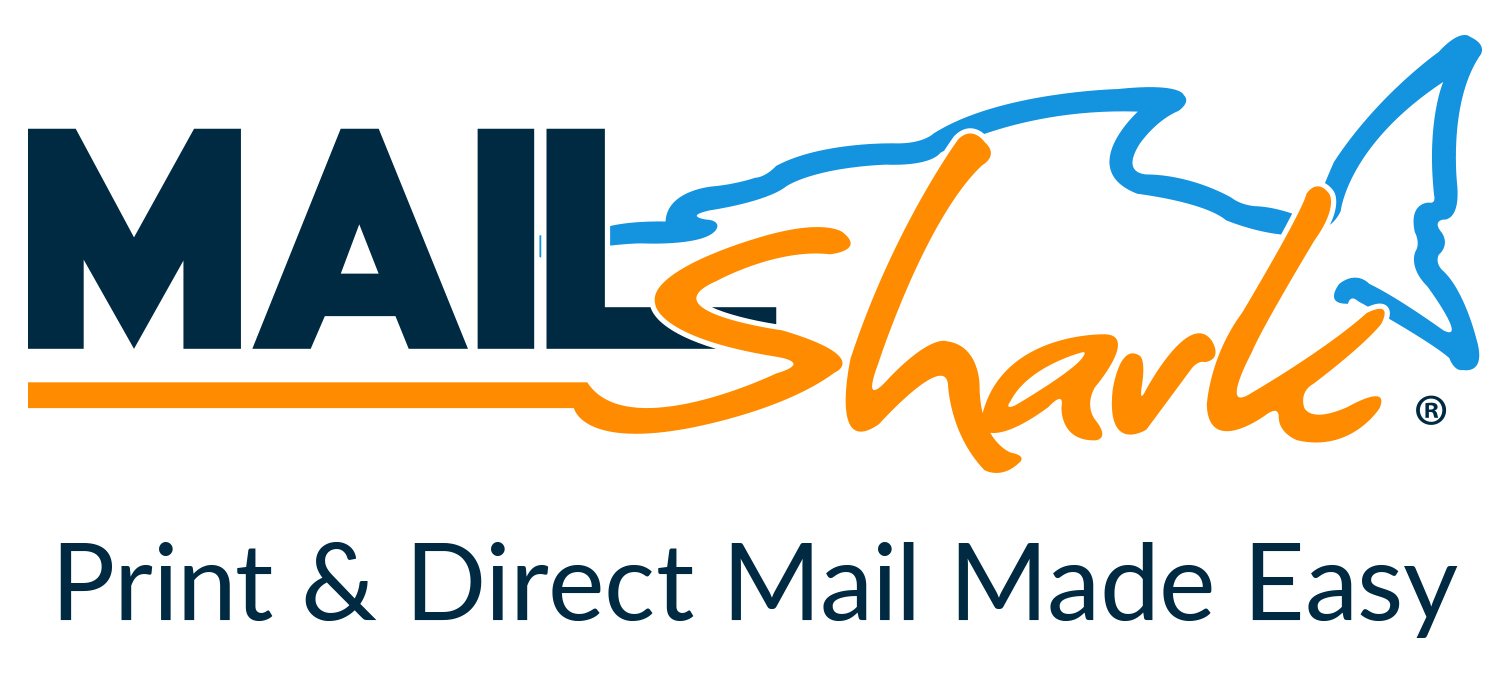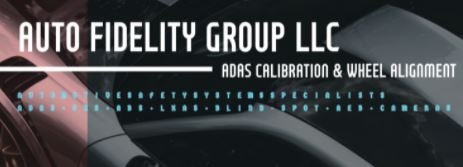Back When - - - Which era do you fit into?
-
Available Subscriptions
-
Have you checked out Joe's Latest Blog?
-
By Joe Marconi in Joe's Blog0 commentsIt always amazes me when I hear about a technician who quits one repair shop to go work at another shop for less money. I know you have heard of this too, and you’ve probably asked yourself, “Can this be true? And Why?” The answer rests within the culture of the company. More specifically, the boss, manager, or a toxic work environment literally pushed the technician out the door.
While money and benefits tend to attract people to a company, it won’t keep them there. When a technician begins to look over the fence for greener grass, that is usually a sign that something is wrong within the workplace. It also means that his or her heart is probably already gone. If the issue is not resolved, no amount of money will keep that technician for the long term. The heart is always the first to leave. The last thing that leaves is the technician’s toolbox.
Shop owners: Focus more on employee retention than acquisition. This is not to say that you should not be constantly recruiting. You should. What it does means is that once you hire someone, your job isn’t over, that’s when it begins. Get to know your technicians. Build strong relationships. Have frequent one-on-ones. Engage in meaningful conversation. Find what truly motivates your technicians. You may be surprised that while money is a motivator, it’s usually not the prime motivator.
One last thing; the cost of technician turnover can be financially devastating. It also affects shop morale. Do all you can to create a workplace where technicians feel they are respected, recognized, and know that their work contributes to the overall success of the company. This will lead to improved morale and team spirit. Remember, when you see a technician’s toolbox rolling out of the bay on its way to another shop, the heart was most likely gone long before that.
-
-
Similar Topics
-
By carmcapriotto
Thanks to our Partner, NAPA Autotech
NAPA Autotech’s team of ASE Master Certified Instructors are conducting over 1,200 classes covering 28 automotive topics. To see a selection, go to napaautotech.com for more details.
Contact Information
Email Matt: [email protected] Diagnosing the Aftermarket A - Z YouTube Channel
Key Highlights:
Matt reflects on the idea of self-awareness and balance, emphasizing that "everything comes from you" and that we are all part of a larger matrix of experiences and growth.
Vision Conference Recap:
Matt shares his experience at the Vision Conference, where he faced a challenging drive through a snowstorm and crosswinds to get there. He highlights the hands-on training sessions he participated in, including: Key Cutting and Programming Class: Co-taught with Andrew Sexton, where attendees got to physically cut keys and program them using a Honda ignition system. Pico Training: A full day of hands-on training with Scott Shotton, focusing on practical, car-side diagnostics. Tech Talks: Featuring Garrett Jacobson (HP Tuners) and Zeb Beard (Thermal Imaging), both of whom delivered high-energy, informative sessions.
Key Takeaways from Vision:
HP Tuners: Matt learned new functionalities of the tool, even after using it for over five years. Garrett Jacobson’s class demonstrated how intuitive and powerful the tool can be for diagnostics. Thermal Imaging: Zeb Beard emphasized the importance of using thermal imagers regularly, even when it doesn’t seem immediately necessary. His session focused on diesel diagnostics but applied to all vehicles.
Personal Reflections and Connections:
Matt shares heartfelt moments from the conference, including dinners with industry friends like Dan Baumgartner, Matt Hall, Kevin Looney, and others. They reminisced about Harvey Chan, a beloved figure in the industry who passed away too soon, and the impact he had on everyone. Matt reflects on the duality of emotions—being sad about losing someone but happy to share stories and memories.
Behind-the-Scenes Stories:
Matt dives into the importance of understanding the "behind-the-scenes" of how things are created, whether it’s a business, a movie scene, or even a professional wrestling match. He shares an iconic wrestling story about Stone Cold Steve Austin and Bret Hart, highlighting how collaboration and trust led to one of the most memorable moments in wrestling history.
Themes of Authenticity and Sharing Knowledge:
Matt discusses the tendency in the industry to want to feel "special" or to exaggerate success stories. He emphasizes the importance of being honest about how things are achieved, whether it’s diagnosing a tough problem or building a successful shop. He encourages technicians and shop owners to share their real stories, even if they involve luck or being in the right place at the right time.
Filling Your Own Bucket:
Matt reflects on the need for self-validation and filling your own "bucket" rather than constantly seeking external validation. He stresses the importance of being honest with yourself and others, giving credit where it’s due, and taking pride in your work without exaggeration.
Key Quotes:
"Set the freaking thermal imager on your diagnostic cart and start using it, even when you don’t know why." "At some point, you’re going to have to fill your own cup. You’re going to have to be content with yourself." "The real stories, if somebody could tell them, didn’t take away from the magic. It’s the art, the craftsmanship, the creativity that’s magical."
The Aftermarket Radio Network: https://aftermarketradionetwork.com/
Remarkable Results Radio Podcast with Carm Capriotto: Advancing the Aftermarket by Facilitating Wisdom Through Story Telling and Open Discussion. https://remarkableresults.biz/
Diagnosing the Aftermarket A to Z with Matt Fanslow: From Diagnostics to Metallica and Mental Health, Matt Fanslow is Lifting the Hood on Life. https://mattfanslow.captivate.fm/
Business by the Numbers with Hunt Demarest: Understand the Numbers of Your Business with CPA Hunt Demarest. https://huntdemarest.captivate.fm/
The Auto Repair Marketing Podcast with Kim and Brian Walker: Marketing Experts Brian & Kim Walker Work with Shop Owners to Take it to the Next Level. https://autorepairmarketing.captivate.fm/
The Weekly Blitz with Chris Cotton: Weekly Inspiration with Business Coach Chris Cotton from AutoFix - Auto Shop Coaching. https://chriscotton.captivate.fm/
Speak Up! Effective Communication with Craig O'Neill: Develop Interpersonal and Professional Communication Skills when Speaking to Audiences of Any Size. https://craigoneill.captivate.fm/
The Aftermarket Radio Network
Remarkable Results Radio Podcast with Carm Capriotto: Advancing the Aftermarket by Facilitating Wisdom Through Story Telling and Open Discussion
Diagnosing the Aftermarket A to Z with Matt Fanslow: From Diagnostics to Metallica and Mental Health, Matt Fanslow is Lifting the Hood on Life.
The Auto Repair Marketing Podcast with Kim and Brian Walker: Marketing Experts Brian & Kim Walker Work with Shop Owners to Take it to the Next Level.
The Weekly Blitz with Chris Cotton: Weekly Inspiration with Business Coach Chris Cotton from AutoFix - Auto Shop Coaching.
Business by the Numbers with Hunt Demarest: Understand the Numbers of Your Business with CPA Hunt Demarest.
Speak Up! Effective Communication with Craig O'Neill: Develop Interpersonal and Professional Communication Skills when Speaking to Audiences of Any Size.
Click to go to the Podcast on Remarkable Results Radio
-
By carmcapriotto
Want to make your shop’s marketing stand out this May? Join Brian Walker and Caroline LeGrand as they break down creative ways to engage your audience, plan your content, and connect with your community.
In this episode, they’ll share creative campaign ideas, fun social media prompts, and practical ways to highlight your team, engage customers, and boost brand awareness. Plus, get inspiration for using national holidays like National Skilled Trades Day, Road Trip Day, and even Pizza Party Day to keep your content fresh and relevant.
Don’t miss this opportunity to simplify your marketing and make a real impact. Tune in now and start planning content that connects!
Thank you to our friends at RepairPal for providing you this episode. RepairPal is the key that unlocks more business for your repair shop. Learn More at RepairPal.com/shops.
AppFueled makes marketing easy. It’s a CRM designed for auto repair shops with tools like segmentation, reminders, and even a call center. Don’t wait—get started today at appfueled.com
Lagniappe (Books, Links, Other Podcasts, etc)
Days of the Year
National Calendar
Show Notes with Timestamps
Introduction to the Episode (00:00:01) Brian and Caroline introduce the podcast and thank RepairPal for their support. Preparing for May Marketing (00:01:16) Discussion on planning marketing strategies for May, emphasizing the importance of advance preparation. General Marketing Themes (00:02:00) Overview of summer-related topics, tax return spending, and pre-trip inspections for vehicles. Motorcycle Safety Awareness Month (00:03:17) Highlighting the importance of motorcycle safety and tips for drivers and riders. Military Appreciation Month (00:03:39) Encouraging auto repair shops to give back to military personnel throughout May. Teacher Appreciation Week (00:04:34) Ideas for showing gratitude to teachers, including small gestures and discounts. National Pet Week (00:05:50) Encouragement to engage customers by sharing pet photos on social media. Celebrating Various Appreciation Weeks (00:07:05) Discussion on multiple appreciation weeks in May and the importance of selecting key themes. Learn to Ride a Bike Day (00:08:04) Suggestions for community engagement by helping kids learn to ride bikes. National Skilled Trades Day (00:09:00) Promoting skilled trades and hosting events to educate youth about automotive careers. Star Wars Day (May the 4th) (00:10:26) Fun marketing ideas related to Star Wars Day for engaging customers. National Odometer Day (May 12th) (00:11:42) Ideas for a fun contest involving vehicle odometer readings to engage customers. RepairPal Certification (00:13:14) Discussion on becoming RepairPal certified and the benefits for auto repair shops. App Fueled Introduction (00:14:18) Overview of a customer loyalty app designed for auto service shops. National Lost Sock Memorial Day (00:14:54) Encouragement for creative engagement ideas related to this fun holiday. Military Appreciation Month (00:15:06) Suggestions for acknowledging military families and providing discounts. National Dance Like a Chicken Day (00:15:59) Call to action for engaging with customers through fun activities. Check Your Wipers Day (00:16:27) Importance of checking wipers before summer travel and educating clients. National Pizza Party Day (00:18:05) Highlighting the fun of pizza party day and community engagement. Armed Forces Day (00:18:28) Ideas for honoring military personnel and their contributions. Memorial Day Awareness (00:18:46) Discussion on the solemn nature of Memorial Day and appropriate observances. National Road Trip Day (00:19:34) Emphasis on preparing vehicles for summer road trips and inspections. National Rescue Dog Day (00:20:13) Celebrating rescue pets and their connection to the auto repair community. World Marketing Day (00:20:48) Encouragement to appreciate and promote effective marketing efforts. Paws and Pistons Campaign (00:22:41) Combining pet care with auto services for community engagement. Prepping for Road Trip Day (00:24:51) Continued focus on educating customers about road trip preparations. Engagement Ideas (00:25:34) Encouragement to share personal stories and engage customers creatively.
Auto Repair Marketing Mastermind (00:26:01) Invitation to join the Facebook group for sharing marketing ideas and support.
How To Get In Touch
Join The Auto Repair Marketing Mastermind Group on Facebook
Meet The Pros
Follow SMP on Facebook
Follow SMP on Instagram
Get The Ultimate Guide to Auto Repair Shop Marketing Book
Email Us Podcast Questions or Topics
Thanks again for listening to The Auto Repair Marketing Podcast on Aftermarket Radio Network. There are some other great shows on the network and you can find them at AftermarketRadioNetwork.com or on your favorite podcast listening apps like Spotify, Apple Podcasts, Google Podcasts, and many others
Thanks to our Partners,
RepairPal at https://repairpal.com/shops. Quality Car Repair. Fair Price Guarantee.
App Fueled at appfueled.com. “Are you ready to convert clients to members? AppFueled™ specializes in creating custom apps tailored specifically for auto repair businesses. Build your first app like a pro.”
Aftermarket Radio Network
Remarkable Results Radio Podcast with Carm Capriotto: Advancing the Aftermarket by Facilitating Wisdom Through Story Telling and Open Discussion
Diagnosing the Aftermarket A to Z with Matt Fanslow: From Diagnostics to Metallica and Mental Health, Matt Fanslow is Lifting the Hood on Life.
The Weekly Blitz with Chris Cotton: Weekly Inspiration with Business Coach Chris Cotton from AutoFix - Auto Shop Coaching.
Speak Up! Effective Communication with Craig O'Neill: Develop Interpersonal and Professional Communication Skills when Speaking to Audiences of Any Size.
Business by the Numbers with Hunt Demarest: Understand the Numbers of Your Business with CPA Hunt Demarest.
The Auto Repair Marketing Podcast with Kim and Brian Walker: Marketing Experts Brian & Kim Walker Work with Shop Owners to Take it to the Next Level.
The Aftermarket Radio Network: https://aftermarketradionetwork.com/
Remarkable Results Radio Podcast with Carm Capriotto: Advancing the Aftermarket by Facilitating Wisdom Through Story Telling and Open Discussion. https://remarkableresults.biz/
Diagnosing the Aftermarket A to Z with Matt Fanslow: From Diagnostics to Metallica and Mental Health, Matt Fanslow is Lifting the Hood on Life. https://mattfanslow.captivate.fm/
Business by the Numbers with Hunt Demarest: Understand the Numbers of Your Business with CPA Hunt Demarest. https://huntdemarest.captivate.fm/
The Auto Repair Marketing Podcast with Kim and Brian Walker: Marketing Experts Brian & Kim Walker Work with Shop Owners to Take it to the Next Level. https://autorepairmarketing.captivate.fm/
The Weekly Blitz with Chris Cotton: Weekly Inspiration with Business Coach Chris Cotton from AutoFix - Auto Shop Coaching. https://chriscotton.captivate.fm/
Speak Up! Effective Communication with Craig O'Neill: Develop Interpersonal and Professional Communication Skills when Speaking to Audiences of Any Size. https://craigoneill.captivate.fm/
Click to go to the Podcast on Remarkable Results Radio
-
By Changing The Industry
Episode 207 - Kathleen Callahan Discusses Right To Repair and Industry Advocacy
-
Staying Humble While Promoting Your Community Involvement [E142] - The Auto Repair Marketing PodcastBy carmcapriotto
Getting involved in your community is powerful, but how do you share your efforts without sounding boastful? There’s a fine line between successful and selfish self-promotion, and in this episode, Brian and Kim Walker discuss how to highlight your work with authenticity and gratitude—not ego.
We’ll discuss framing your message to focus on the cause, aligning community service with your company culture and purpose, and sharing stories that connect and inspire rather than just promote. Plus, we’ll share real-life examples—like our team’s work with Our Daily Bread Food Bank—and how to encourage others to get involved.
Tune in now to learn how to support your community while staying humble and making a real impact!
Thank you to our friends at RepairPal for providing you this episode. RepairPal is the key that unlocks more business for your repair shop. Learn More at RepairPal.com/shops.
Want to revolutionize your marketing? AppFueled does it all—email, text, app notifications, and even call center integration. Stop guessing and start connecting with AppFueled.
Lagniappe (Books, Links, Other Podcasts, etc)
Start with Why - By Simon Sinek
Our Daily Bread Food Bank
Commission Mankind
Show Notes with Timestamps
Introduction to the Episode (00:00:10) Brian introduces the podcast and the topic of community involvement. Topic Suggestion Acknowledgment (00:00:34) Brian mentions Doug DeLuca's suggestion for the episode topic. Sponsor Acknowledgment (00:01:00) Brian thanks RepairPal for sponsoring the episode. Technical Issues Discussion (00:01:30) Brian and Kim discuss technical issues and Brian's experience with braces. Community Involvement Concerns (00:03:44) Kim shares a friend's hesitation about promoting community involvement due to fear of appearing boastful. Successful vs. Selfish Promotion (00:05:44) Discussion about the fine line between effective promotion and self-promotion. Promoting Community Engagement (00:07:24) Kim emphasizes the importance of spacing out promotional posts about community involvement. Starting with Gratitude (00:07:46) Kim suggests starting messages about community involvement with expressions of gratitude. Importance of "Why" (00:09:09) Discussion on the significance of explaining the reasons behind community involvement. Examples of Community Involvement (00:09:15) Brian and Kim share experiences of their community service activities. Promoting Community Work (00:11:25) Brian discusses the importance of promoting community service to demonstrate business values. Messaging about Community Involvement (00:12:21) Kim provides examples of how they communicate their community involvement on social media. Team Engagement in Community Work (00:14:20) Brian reflects on the team's connection with community members during service activities. Closing Sponsor Acknowledgment (00:15:14) Brian thanks RepairPal again for supporting the episode. Community Engagement Strategies (00:15:26) Discussion on how RepairPal helps auto shops gain customers through certification and fair pricing. Customer Loyalty Apps (00:16:25) Introduction of App Fueled, a customer loyalty app designed for auto service shops. Highlighting Community Work (00:17:11) Tips on emphasizing organizational missions instead of personal achievements in community involvement. Authentic Community Involvement (00:17:54) The importance of sharing community efforts without seeking personal recognition or return. Sharing GoFundMe Campaigns (00:18:51) Encouragement to promote charitable causes without boasting about personal donations. Industry-Specific Support (00:19:16) Discussion on giving back to the auto repair industry and local communities. Respecting Privacy in Sharing (00:19:39) The balance between sharing community involvement and respecting the privacy of those served. Educating Marketing Teams (00:22:43) The need to guide marketing teams on how to portray community involvement authentically. Collaborating with Other Organizations (00:24:17) Benefits of partnering with local businesses for community service efforts. Celebrating Local Teams (00:25:38) Highlighting local sports teams and community events to promote goodwill. Telling the Story of Donations (00:27:40) Importance of sharing the personal connection behind charitable contributions. Personal Anecdotes from Mission Trips (00:28:28) Sharing impactful stories from mission trips to illustrate the importance of community support. Personal Anecdote on Community Support (00:29:29) Kim shares a personal story about supporting organizations that assist her brother with disabilities. Encouragement to Join Facebook Group (00:30:44) Kim invites listeners to join their Facebook group for further engagement and community building. Request for Podcast Reviews (00:31:03) Brian asks listeners to leave reviews for the podcast, emphasizing the importance of feedback. Closing Remarks and Sponsorship Acknowledgment (00:31:36) Brian concludes the episode, thanking sponsors and encouraging listeners to tune in next week.
Thanks to our Partners,
RepairPal at https://repairpal.com/shops. Quality Car Repair. Fair Price Guarantee.
App Fueled at appfueled.com. “Are you ready to convert clients to members? AppFueled™ specializes in creating custom apps tailored specifically for auto repair businesses. Build your first app like a pro.”
Aftermarket Radio Network
Remarkable Results Radio Podcast with Carm Capriotto: Advancing the Aftermarket by Facilitating Wisdom Through Story Telling and Open Discussion
Diagnosing the Aftermarket A to Z with Matt Fanslow: From Diagnostics to Metallica and Mental Health, Matt Fanslow is Lifting the Hood on Life.
The Weekly Blitz with Chris Cotton: Weekly Inspiration with Business Coach Chris Cotton from AutoFix - Auto Shop Coaching.
Speak Up! Effective Communication with Craig O'Neill: Develop Interpersonal and Professional Communication Skills when Speaking to Audiences of Any Size.
Business by the Numbers with Hunt Demarest: Understand the Numbers of Your Business with CPA Hunt Demarest.
The Auto Repair Marketing Podcast with Kim and Brian Walker: Marketing Experts Brian & Kim Walker Work with Shop Owners to Take it to the Next Level.
Click to go to the Podcast on Remarkable Results Radio
-
-
-
-
Our Sponsors














Recommended Posts